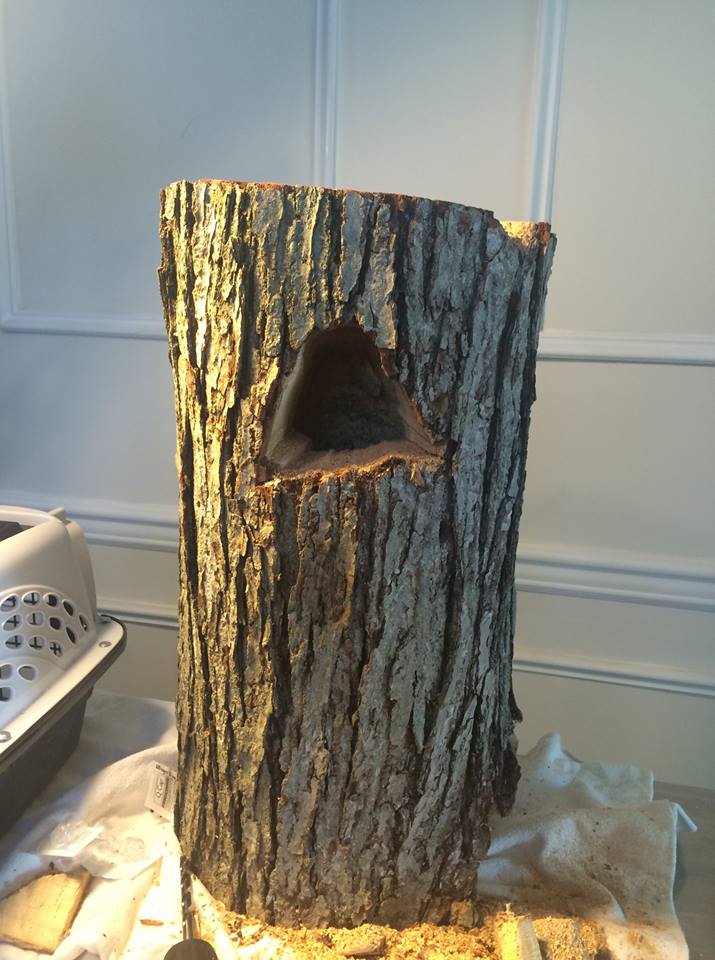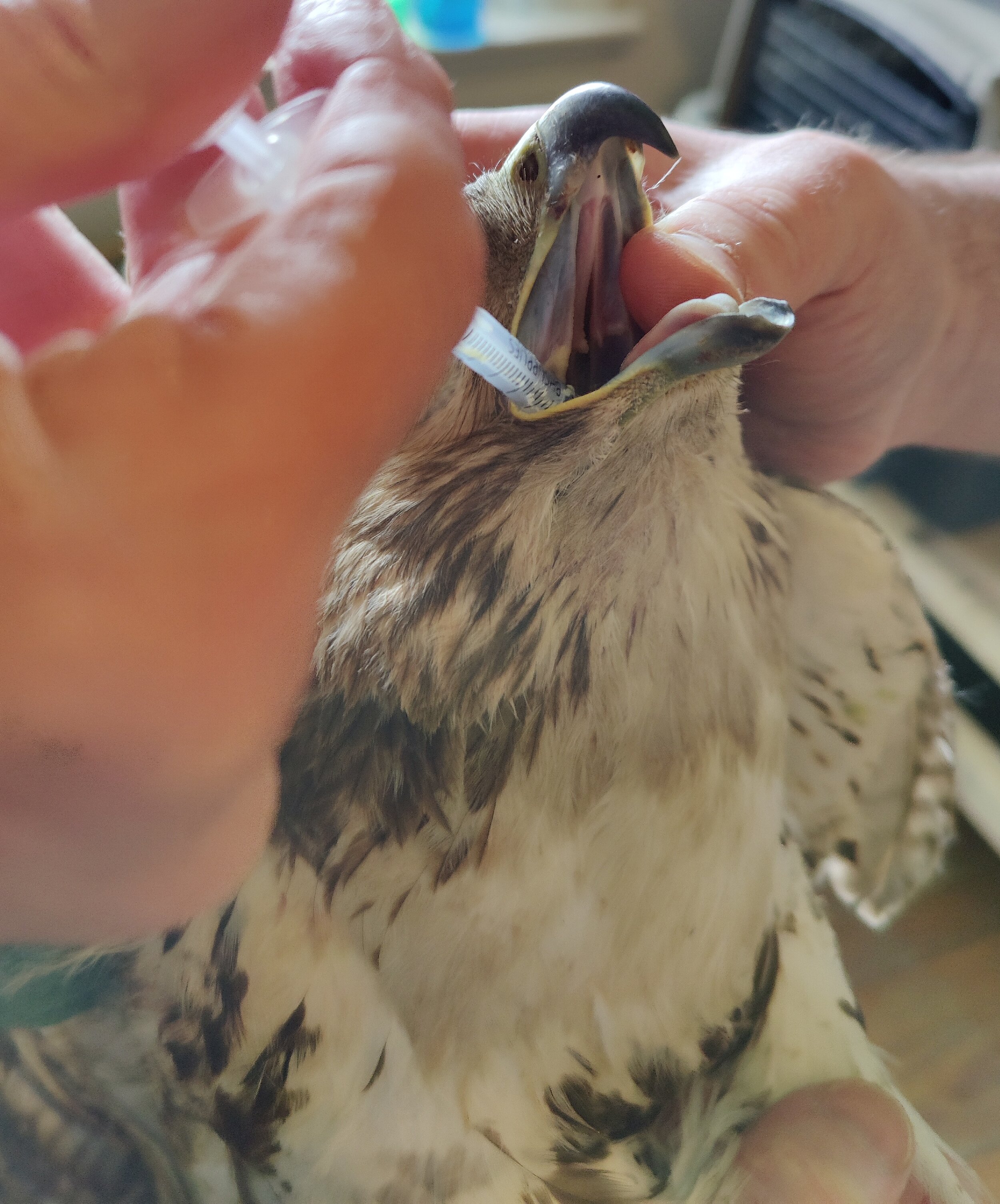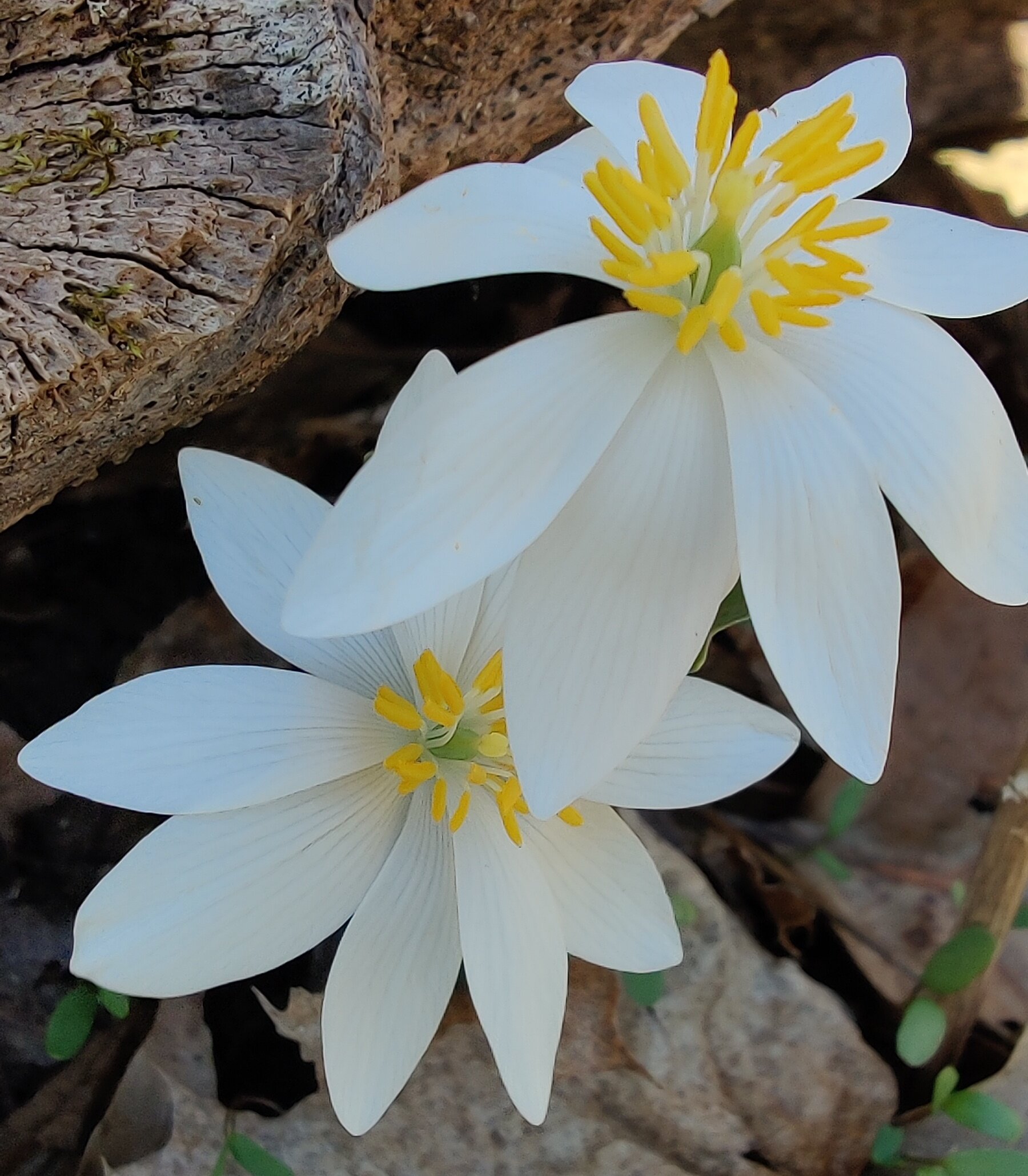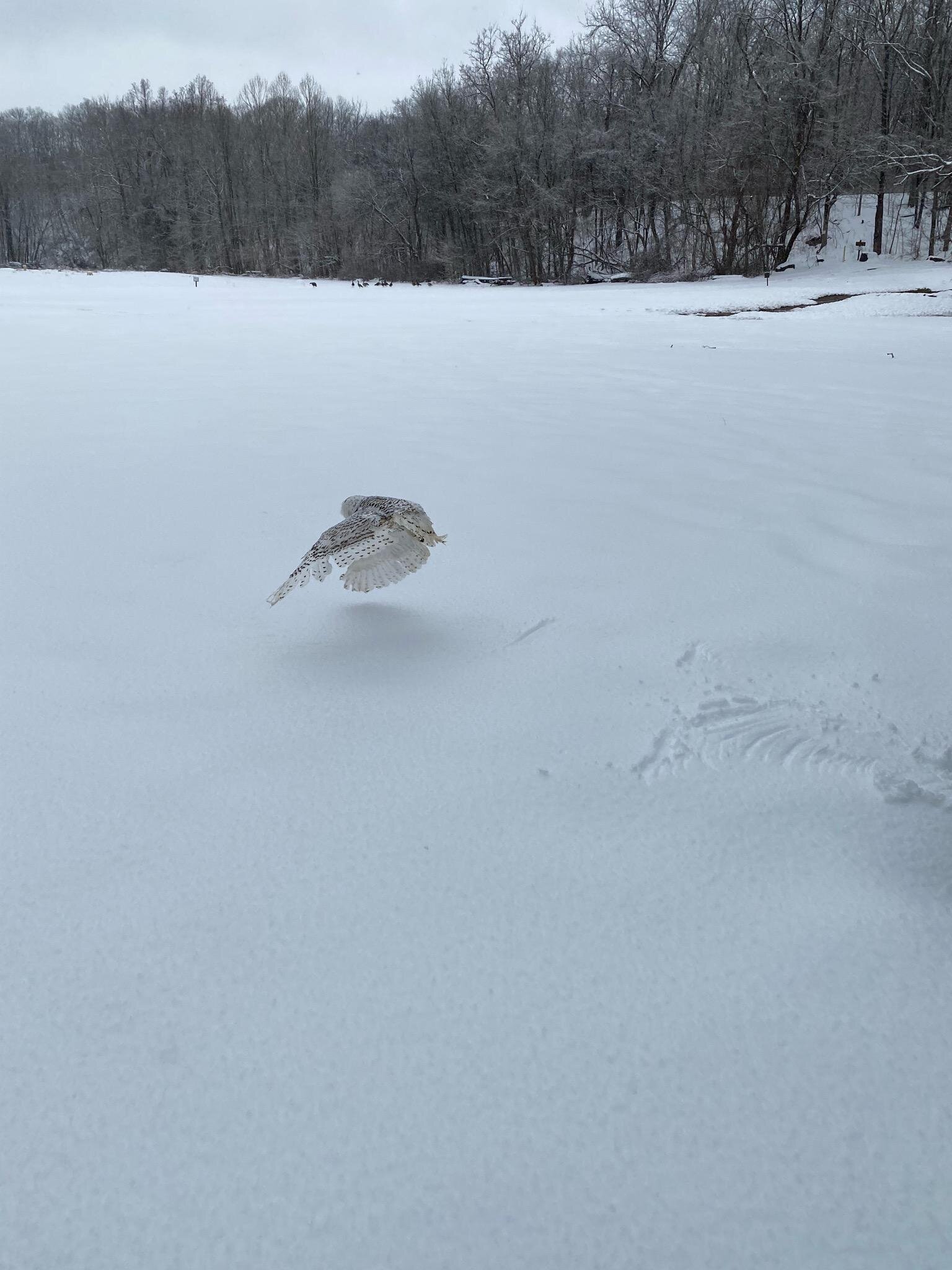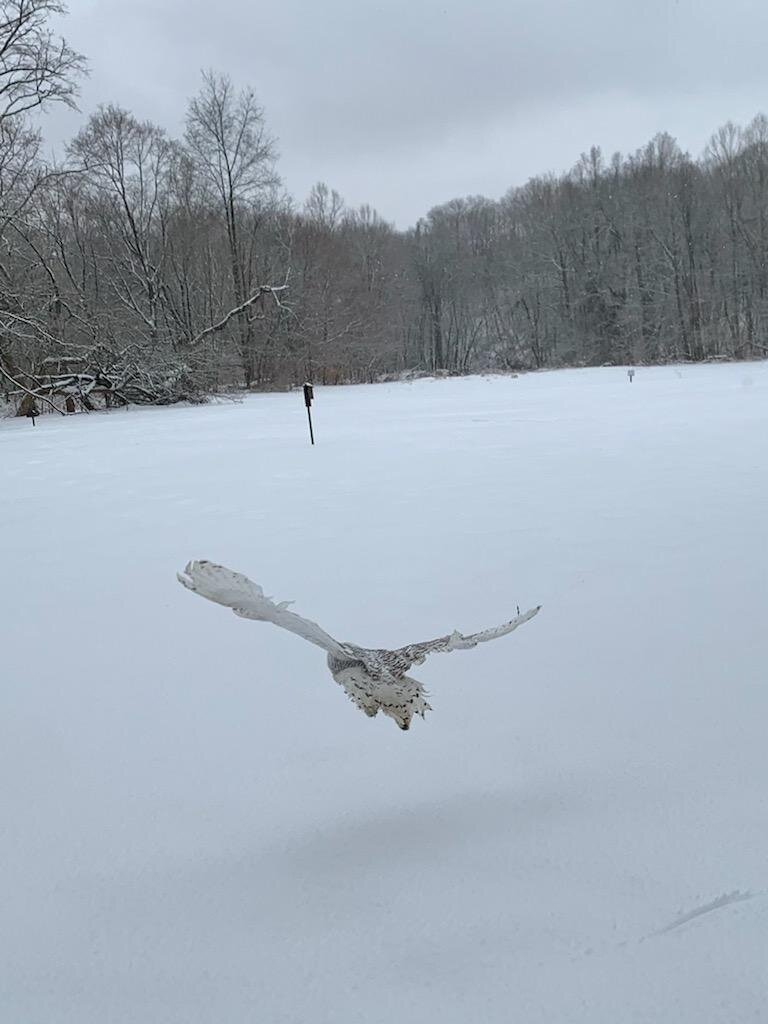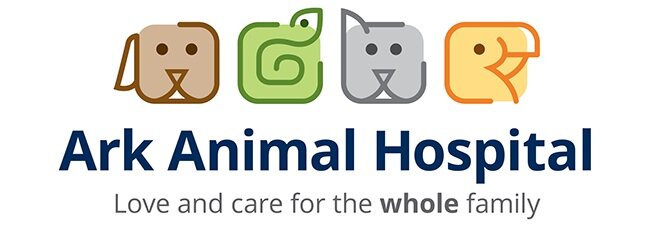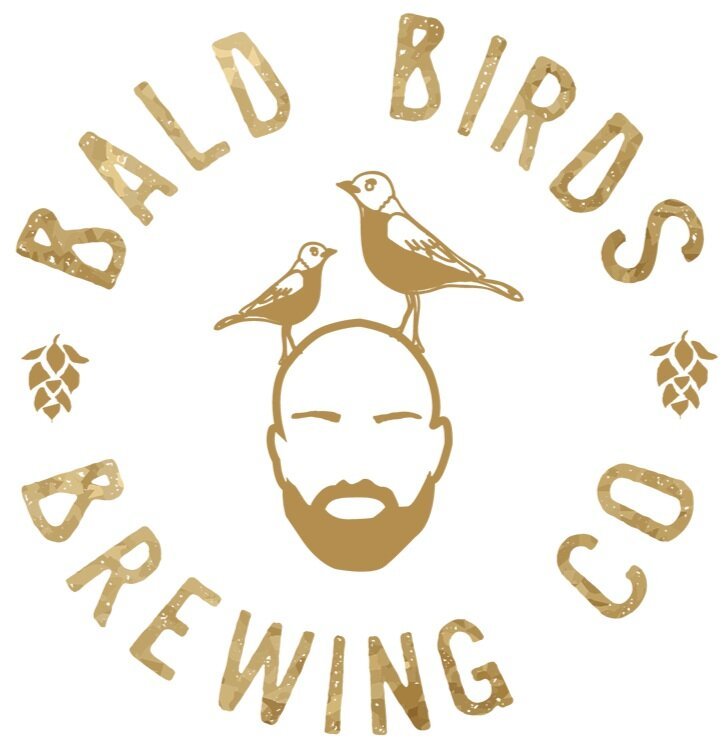This is a seafaring, diving bird. We think it was blown off course, having to land on - well, land. This bird is so adapted to swimming and diving, that it can no longer properly walk. Its legs are so far to the rear, it tips forward on dry earth. So, if it finds itself on land, it is grounded because it cannot take off. We gave this bird a full examination and observed it over a couple of days while it feasted on seafood. A volunteer took the bird back to a place scoters are commonly sighted.
The year of the rabbit
Happy new year. Our first patient of 2023 was an eastern cottontail. So, here at Philadelphia Metro Wildlife Clinic, it is the year of the rabbit. What this year has in store for us is anyone’s guess. But, whatever may come, we will be here every day (rain or shine) to answer your calls and admit new patients.
A happy, healthy and meaningful year to one and all.
Patient 0081 European Starling
We recently admitted this European Starling which was caught on a glue mouse trap covered in oil. In an effort to extract the bird, our well-intentioned neighbor doused it in oil.
If you find a hurt animal caught in or on a trap, please do not try to remove it yourself. Bring the animal, together with the trap, to us for treatment. If it is a sticky trap, apply paper to the exposed parts so the animal does not get further ensnared. At the center, we will use special solvents to carefully, and painlessly, extract the animal.
We carefully removed this starling from the trap. We then gave patient 0081 a series of baths to remove the oil saturating its feathers.
____
Yes, we do admit and treat European Starlings, a “non-native” species. We think starlings deserve our care and consideration, too. Through no fault of their own, they were introduced into this environment by humans. They are here to stay. We have no illusions about controlling their population - the birds we treat and release won’t alter their numbers appreciably, anyhow. Our mission is the patient on the table. We will do whatever we can to reduce its suffering.
Plus, these birds are pretty cool. You may have heard their interesting and varied vocalizations, or you may have seen their spectacular displays. We at Metro Wildlife admire and appreciate them.
Patient 0061 Gray Squirrel
This squirrel was admitted with a large abscess on its jaw. We drained the fluid, then administered antibiotics and pain medication. Patient 0061 is now on the road to recovery and release.
Patient 0022 Northern Flicker
This is a Northern Flicker, one of the woodpecker species native to Pennsylvania. A neighbor found it in her backyard after it struck a window. Notice the yellow shafts on the feathers.
Patient #2924 - struck by car
This Red-tailed hawk was hit by a car. A kind motorist noticed the injured bird and brought it to us using the box-over method. As you can see in the pictures, the animal’s right side primary flight feathers were severely damaged and are now regrowing. Once the bird can achieve stable flight, we will set it free.
Courtesy of US Fish and Wildlife
RETROSPECTIVE - Our First Blog Story
Our first blog post is the story of a dramatic rescue at the Philly Metro Wildlife Center. Someone had to cut a dead tree down, but it had TWO holes in the trunk. The nice tree guy cut the trunk into pieces and brought them to us. The first piece of trunk was making sounds like baby red-bellied woodpeckers inside, but woodpecker parents don't just bore a hole straight into a tree--instead, they bore a hole in, then deep down. Specifically, narrow enough and deep enough that a raccoon can't get his arms down there, or a hawk can't reach his talons down there, to pull the babies out to eat them. In this case, no human could get a hand in there, not even Tyrion Lannister. So how did we get the babies out without hurting them?
First, we had to widen the hole. We started with a saw, cutting two longitudinal lines down, then using a drill to make holes across and then router-out the holes and remove the piece of wood. The rehabbers Rick and Michele have been doing this kind of work for a combined 31 years, so we know exactly how to do it without hurting babies. Don't try this at home! When we were done, it was wide enough for a woman to get her hands in. What did we find?
With the hole widened, volunteer Moya Kinnealey, who has been with us for 13 years, was able to get her hands in and safely withdraw the babies--4 red-bellied woodpeckers! They were alive and doing well, and recently hatched! You can still see the egg tooth if you look closely. BUT--the story is not over yet...this tree had one more surprise for us!
Baby red-bellied woodpeckers!
This particular tree had TWO holes in it. The second contained a baby screech owl.
This is a sad thing--two families disrupted, two sets of parents devastated, two different species unhomed. And screech owl nests typically have 3 or 4 babies, not 1, so the others must have fallen or jumped out beforehand, and are lost. However, through wildlife rehab we were able to salvage some of the situation and give some of these beautiful animals a second chance.
Below is a photo of the woodpecker babies after they have grown a bit, looking happy and healthy! The screech owl baby also did very well and was eventually released! A true success story!
At Philadelphia Metro Wildlife Center, our mission is to provide support and rehabilitation to injured and orphaned wildlife, and to inspire and educate people to care about and coexist with wildlife. We accomplish this work with the support of our dedicated volunteers and are purely funded through donations. Please help us accomplish our mission by sharing this blog post, following our stories, and providing donations of supplies or funding. Any questions? Please send an e-mail to info@phillywildlife.org
Great Horned Owl Returns
Woodchucks
Retrospective - Patient #0001
Opossums Aplenty
Great Horned Owl Surrogacy Begins
Baby Raccoons
Baby raccoons are upon us. If you find an injured or orphaned baby raccoon, call us (267) 416-9453. We will help you determine whether it might be possible to reunite the baby with its mother, which is always best.
Busy Season is Approaching
A small sample of clinic events this week: A Red-tailed Hawk receives treatment after a head trauma, a Snapping Turtle has its wound cleaned and dressed, and Pennsylvania wildflowers emerge on the property.
Young Squirrel Caught by Cat
A cat injured this squirrel’s paw which was partially degloved. We stabilized the wound, administered antibiotics and pain medication. She is eating well and we are optimistic about a full recovery.
Snowy Owl Release
Opossum - Hit by Car
This unlucky opossum was struck by a vehicle. Luckily, a motorist acted quickly and brought her to us. We set the bone and provided palliative care. She is stable and resting well.
Fox Release
After a month rehabbing in our care, this newly healed and healthy fox was just released to the backyard from whence it came in Roxborough. The very compassionate property owners trapped it and brought it to us for care, and our wonderful volunteer Michael Eibel took it back to its home turf, where it remembered its old den and darted right back to it. Since these animals live amongst us now (or rather we live amongst them), we must learn to coexist with them.
Snowy Owl
This snowy owl was injured on barbed wire at the State Prison, and was found bleeding with a broken wing. The prison was very nice and accommodating in letting our team in to rescue him, and the awesome people at Radnor Veterinary Hospital are miracle workers, placing a pin in the fractured wing bone so that it could heal properly for the bird to fly again...especially since this bird will need to make his way back to the Arctic Circle by next spring! We'll make sure he's fat and ready in time. Dig it: snowy owls, usually the juveniles, are occasional visitors to PA in the winter, travelling from the far North.
Eastern Box Turtle
Contrary to popular belief, an eastern box turtle’s shell is composed of living tissue that can bleed when injured and sense pain when hurt.














